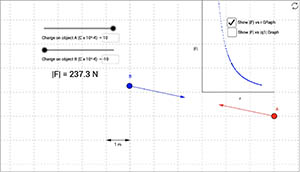
|
Coulomb's Law with Two Charged Objects
This is a basic simulation showing the force of attraction or repulsion between two charged objects. The charge on each object and the positions of the objects can be changed. The resulting forces are shown by force vectors, and the numerical magnitude is also shown.
|

|
Coulomb Forces on Three Charged Objects
This is a basic simulation showing the forces of attraction or repulsion between three charged objects. The charge on each object and the positions of the objects can be changed. The resulting forces are shown by force vectors, and the numerical magnitude can also be shown.
|
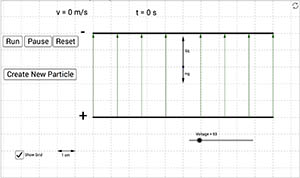
| The Millikan Oil-Drop Experiment
This activity allows students to simulate a simplified version of Robert Millikan's Oil-Drop experiment. Instructions are given under the simulation. |
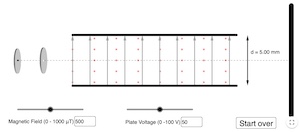
| Electron Charge to Mass Ratio Lab
This is multi-step simulation of the experiment done by J. J. Thomson to determine the charge/mass ration for an electron.
|
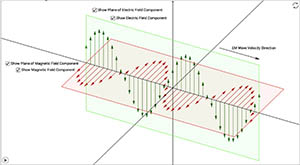
| Electromagnetic Waves
This is a simple animation representing an electromagnetic wave. The green vectors show the fluctuation of the electric field, the red vectors show the fluctuation of the magnetic field. |
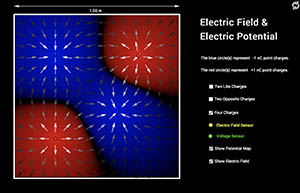
| Electric Field & Potential
A simulation showing the electric field and electric potential map around a collection of point charges.
|
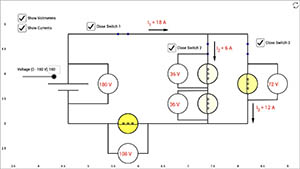
| Electric Circuit with Four Identical Light Bulbs
This is a simulation of a combination circuit with a power supply, four identical light bulbs, and three switches. Open and close the switches and make predictions about the amounts of voltage across the bulbs, the currents through the bulbs, and the brightness of the bulbs (which is related the power each is dissipating as heat and light). Use the checkboxes to show or hide the voltages and currents.
|
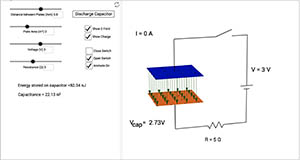
| Capacitor Lab
Simulation of a capacitor charging.
Use the sliders to adjust the battery voltage, the resistor's resistance, the plate area, and the plate separation. Use the check boxes to open and close the switch, as well as turn the animation on one off. When animation is turned off, you can use the step buttons to advance time forward or backward in small steps.
|
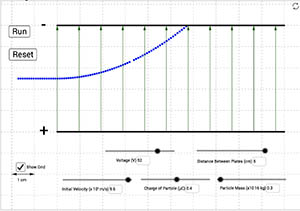
| Charged Particle in an Electric Field
This is a simulation of a charged particle being shot into a uniform electric field.
Use the sliders to adjust the various quantities. Press run to shoot the particle into the field.
|
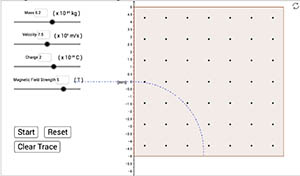
| Charged particle in a Magnetic Field
This is a simulation of a charged particle being shot into a magnetic field. It can be used to explore relationships between mass, charge, velocity, magnetic field strength, and the resulting radius of the particle's path within the field.
Use the sliders to adjust the particle mass, charge, and initial velocity, as well as the magnetic field strength.
|
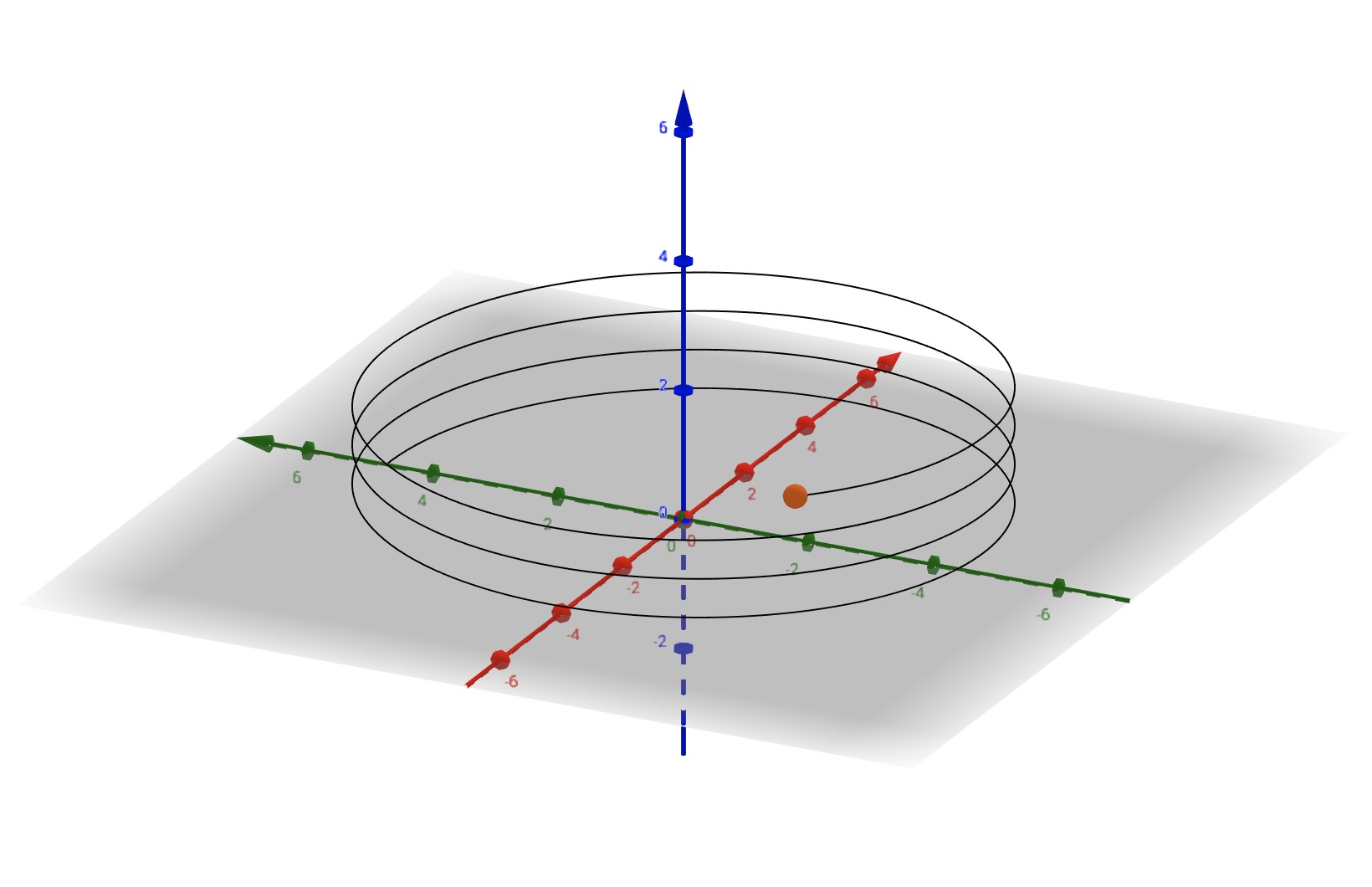
|
Charged Particle in a Magnetic Field 3D
This is a 3D simulation of a charged particle moving in a magnetic field.
Adjust the strength of the magnetic field, the particle mass, particle charge, and its initial velocity in the x and z directions using the sliders. Hit the RUN button to observe the path of the particle in the magnetic field.
|
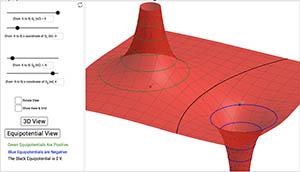
|
Equipotentials & Electric Field of Two Charges
In this simulation you can adjust the charge and position of the two charges using the sliders or the input boxes. The sliders work, but do not work smoothly due to the complexity of the calculations - so you may be better off using the input boxes. Choose to view in 3D and the Electric Potential is shows as the third dimension. Choose the equipotential view and you'll see a 2D view with equipotential lines shown. In this view you can also choose to see vectors showing the direction of the electric field.
|
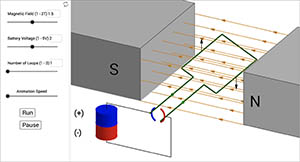
|
DC Motor
In this simulation of a DC motor, you can adjust the voltage, magnetic field, and the number of loops in the coil.
|
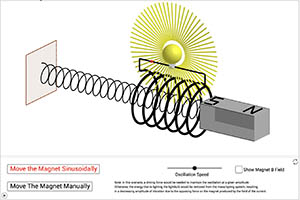
|
Electromagnetic Induction
In this simulation a current can be induced in a coil of wire by the motion of a bar magnet.
|